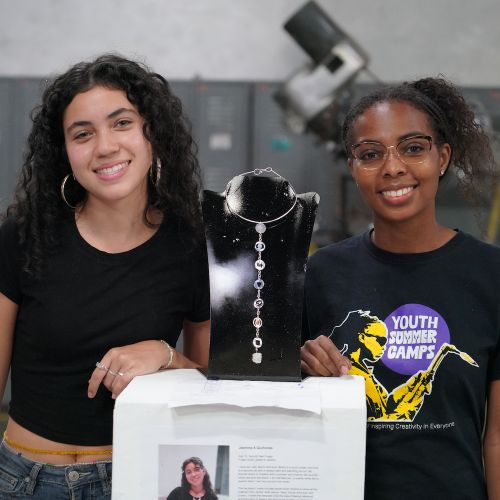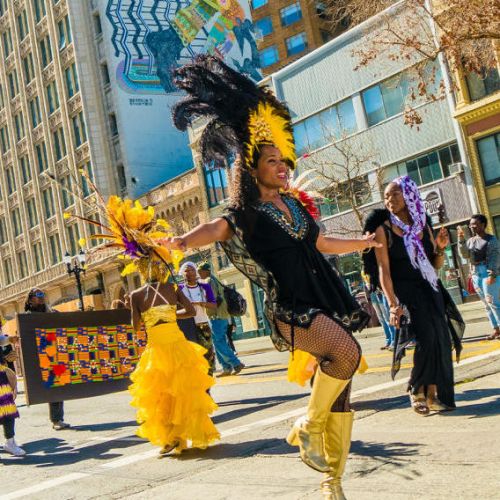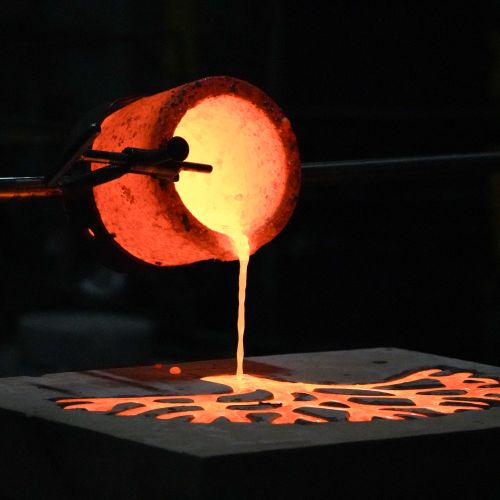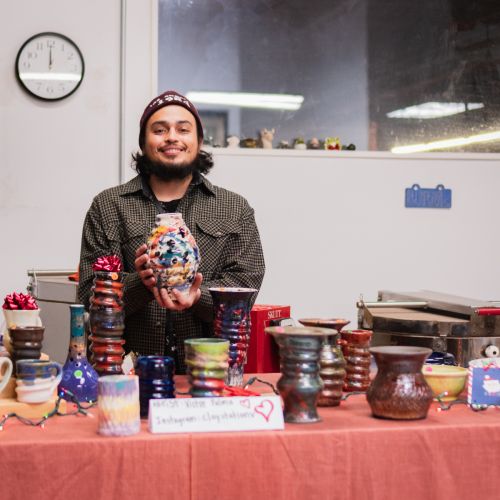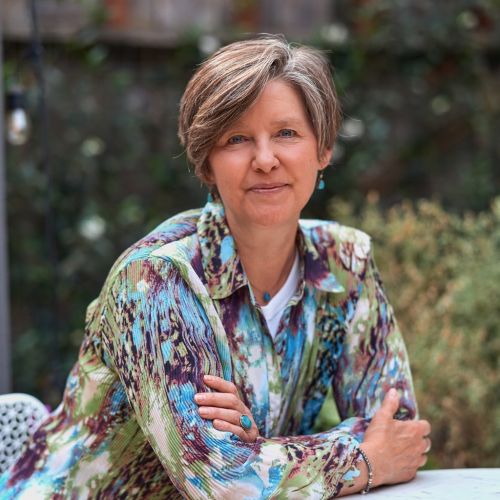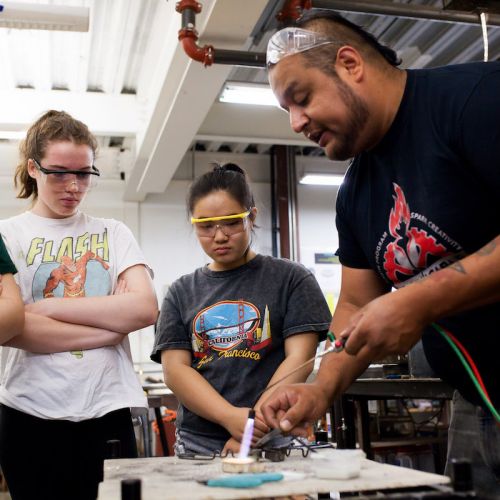Community
Abisola Coretta Explores Science Through Art At The Crucible
By Cathy Niland | 9.22.20
When Abisola Coretta began her Ph.D. program, she had never heard of The Crucible. “Speaking with a professor at Stanford, they mentioned The Crucible as being a really cool makerspace, so I came on a tour.” During her first visit, Abisola spent more than two hours speaking with our faculty about their process, our mission, and The Crucible’s influence on the Bay Area maker community. From there she was hooked.
From a research perspective, Abisola was initially interested in how novices at The Crucible developed skills in fabrication and machine work. But since last October, Abisola has immersed herself in the community of The Crucible, volunteering at a number of Crucible events, supporting our Youth Clay Critters students this past summer, and supporting our staff in the tool room. The Crucible has inspired a new research exploration for her of art as an alternative educational pathway.
“My research now is mainly focused around how art enables people to learn technical skills,” said Abisola. “Maybe even how art can broaden the possibility for people to learn technical skills compared to traditional education.”
Below, Abisola opens up about her research, her experience volunteering, and what she loves about The Crucible. Absiola is a great example of just one of the many incredible volunteers who truly make our work at The Crucible possible.
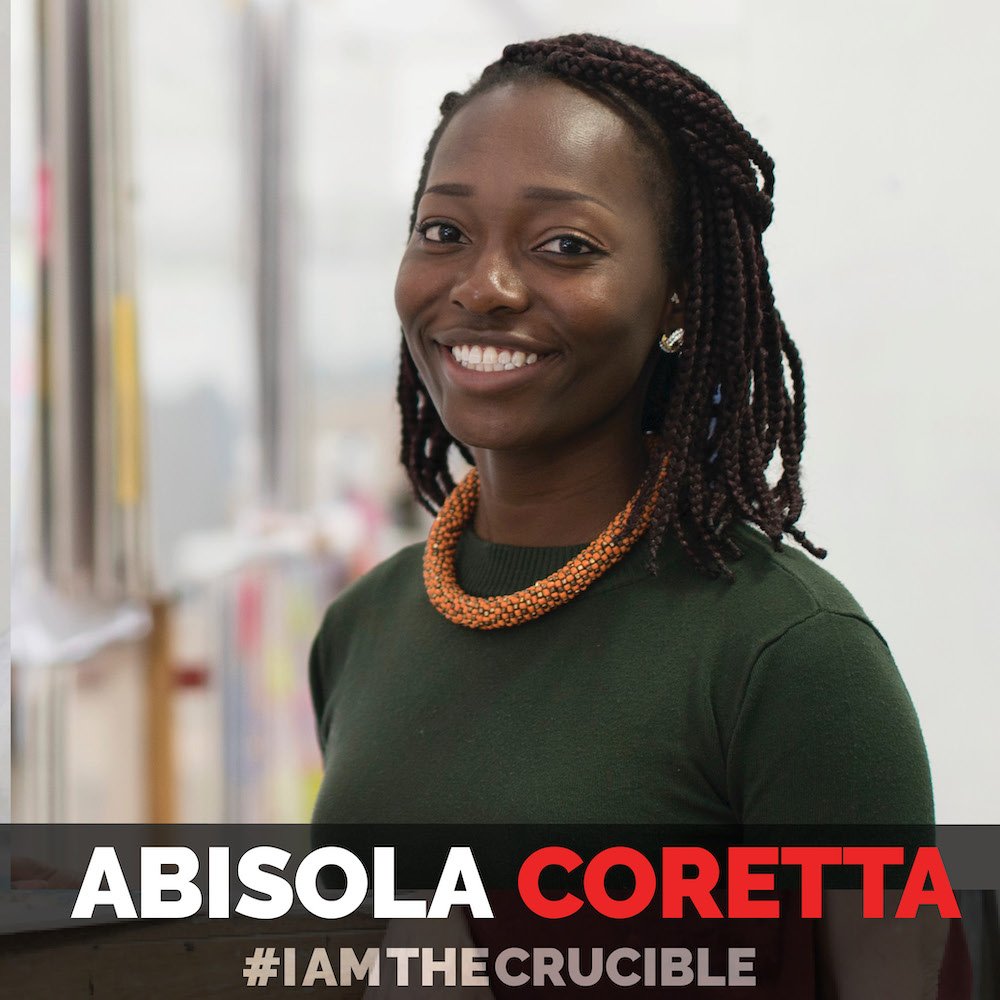
I Am The Crucible: Abisola Coretta
Tell us a little about your research.
I’m interested in how novices gain technical expertise—essentially how people who have no real fundamental background in making things, learn how to do these really elaborate, elegant fabrication projects. When I started going to The Crucible, I was interviewing a bunch of different faculty, exploring how they learned to do what they do. I was really interested in how they’ve come to use these technical skills in what is also very much so an artist’s space.
There’s something I didn’t expect to see: How art is being used to teach technical work to people who don’t have a background learn these skills. For example, Phoebe who does a lot of chemistry work, but has a background in ceramics—that to me is really fascinating. This whole line of research that I’m now doing is very much inspired by what I’ve learned from talking to faculty and observing at The Crucible.
Did you know about The Crucible when you sought out your program at Stanford?
It was a coincidence and it was a great one! Things like this don’t exist in other places. The Crucible is super unique in the country and maybe even in the world. It’s pretty awesome that it happens to be close enough that I can drive.
Why is volunteering important to you?
I am drawn to volunteer work, both because of the community that organizations are based in or serve and because I’m drawn to helping create access. The Crucible strives to provide access to people who want to learn how to make things in a new way.
Personally, what I want to see come out of this Ph.D. is for me to find ways to bring access to communities that I feel are underserved and communities that I care about—to give them access to more opportunity.
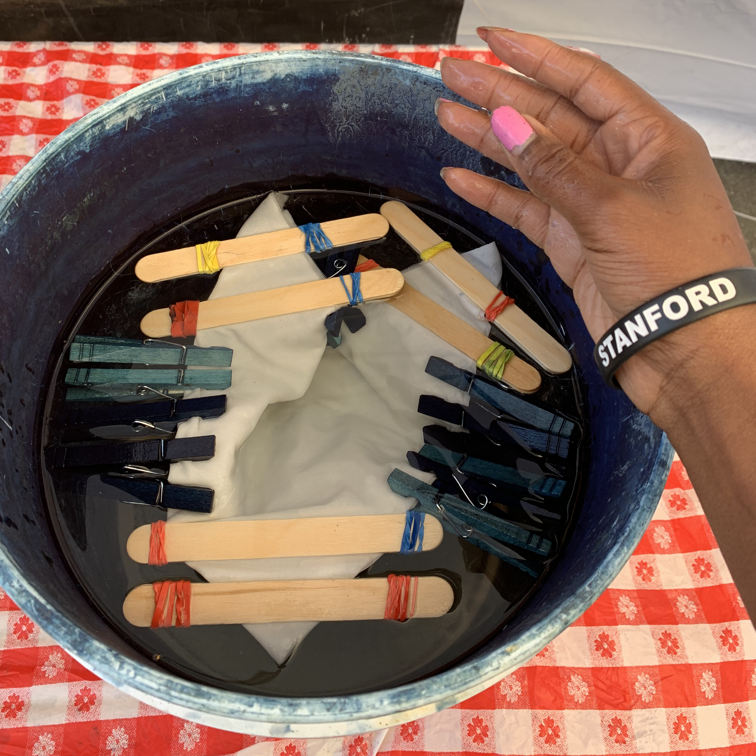
Last Fall, Abisola supported staff and faculty with Indigo Dyeing at the Mini Maker Faire.
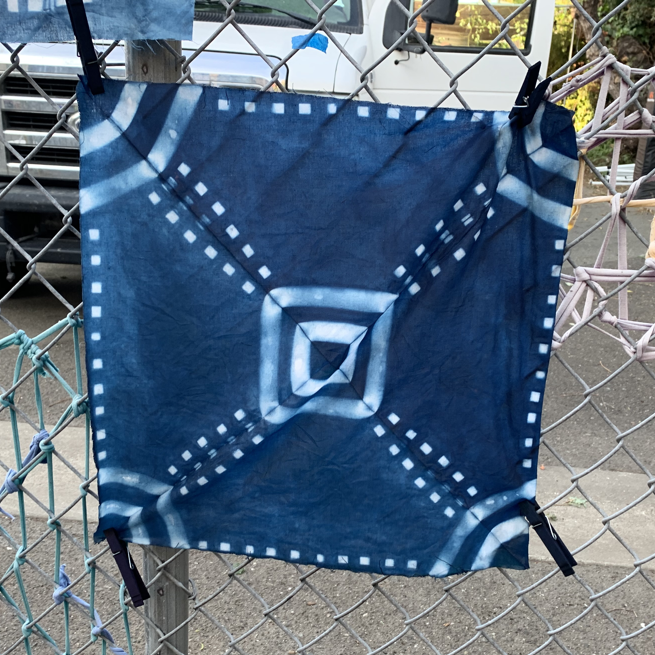
Abisola’s finished hand-dyed kerchief from 2019 Mini Maker Faire.
What has been your favorite part of volunteering?
I feel like I’ve enjoyed all the experiences. I’ve learned something different in each role, which makes it challenging to say what my favorite thing was. I really enjoyed getting to learn from people and also just observe how things happen here.
The Crucible takes volunteer work seriously and treats me as a member of the team. I think the level of care that gets put into the volunteer experience—in addition to the experiences students have—is pretty amazing. The people I’ve talked to are always amazed by how organized, how thorough, and how elaborate the volunteer work is.
What inspires you the most about The Crucible?
I guess it’s kind of twofold. I think the potential impact The Crucible can have on people’s lives, especially people that may not traditionally see themselves as makers or may not themselves be a part of the maker community, I think is so great. It’s pretty incredible and inspiring that you can create an inclusive atmosphere, you can make people feel like they belong, even in a space where traditionally their voices, bodies, and narratives have been left out.
Then I just see how passionate the faculty are about the work that they do. I’ve spoken to people from a number of departments, and I mean tears are shed when talking about how much they love the material they work with, how much they love the process, and how they go home and continue to work on their art.
Being amongst people who love to do what they do, getting to learn from them and speak with them, then share that with others is really inspiring. It’s just a really fascinating place. There’s a lot to be inspired by.
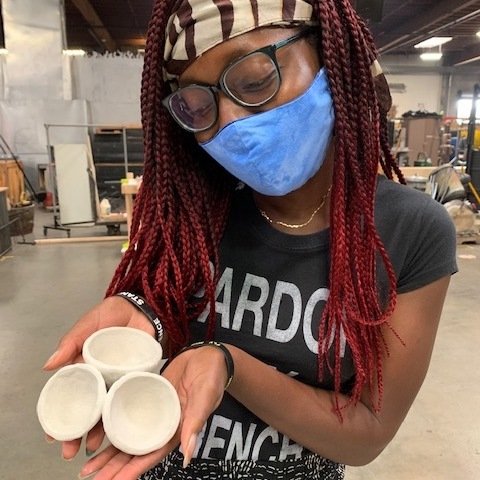
What is one word you would use to describe The Crucible?
The word that comes to mind is welcome or maybe open? I’m trying to think of a word that encompasses the way that I was able to be received, someone who had no connections and didn’t know anyone. And I was able to walk in, be greeted by someone, and then led on this tour. And not necessarily be questioned or feel like I didn’t belong.
Left: Abisola with her hand-built ceramic bowl made while volunteering in Youth Clay Critters during 2020 Youth Summer Camps.



